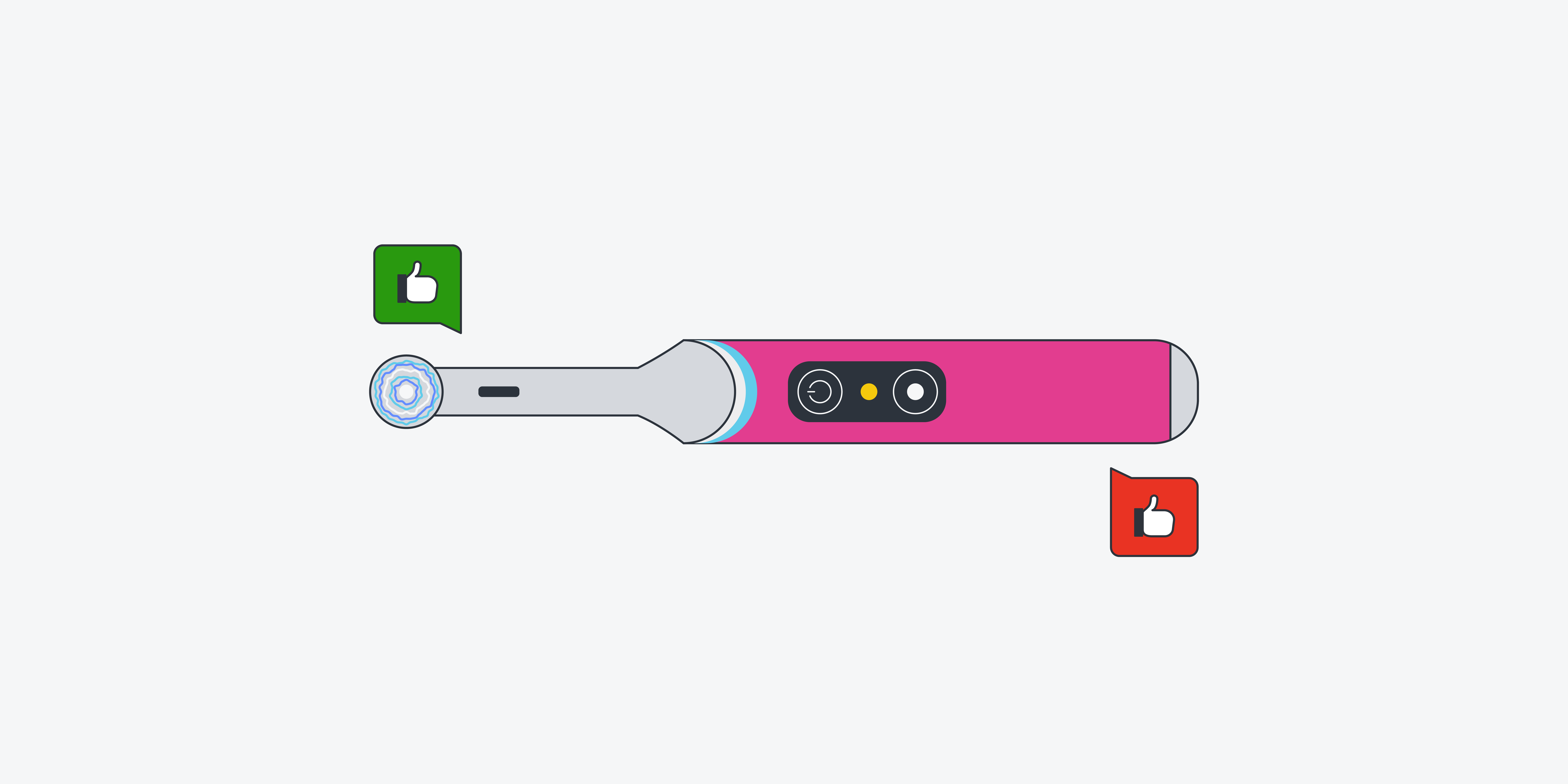When you plan a UX project, research can sometimes feel like an afterthought. After all, you have so many other things to think about, including the wireframing, prototyping, and designing of your product. But without research, you can’t get to know your users, and you’re likely to make mistakes because of it. UX research helps reduce errors and saves time by creating products that really work for users.
So, choosing the right user research technique (or techniques) for your project is essential, but the right user research technique depends on the project and the context. No two projects will use the same techniques for exactly the same reason. Here, we’ll demystify which user research techniques to use under which circumstances.
What are user research techniques?
User research techniques, or user research methods, help you gain insight into your target user and their needs, behaviours, motivations, goals, and pain points. While you can speculate about users’ needs until the cows come home, only user research will tell you what users really want, helping guide the design process with real-world understanding.
To choose the correct method, you need to understand the following categories:
1. Qualitative vs. Quantitative
Qualitative research answers the question “why?” It collects data in the form of the written or spoken word and then analyses that data for themes or patterns. For that reason, it can be time-consuming and labour-intensive, however, you only need a few participants.
Qualitative research answers questions like “how much?”, “how often?”, and “how many?” It collects numerical data that’s evaluated using statistics. And while it’s certainly easier and quicker to conduct and analyse than qualitative research, it requires more participants. Learn more about quantitative vs. qualitative research.
2. Generative vs. Evaluative
Generative research, sometimes called exploratory, foundational, or discovery research, identifies opportunities to solve real-world problems. It uses direct observation and deep analysis to develop a full understanding of your users and discovers opportunities for innovation that will meet a real need in the marketplace. This kind of research takes place early in the project lifecycle.
Evaluative research assesses people’s responses to a solution and addresses its success. It is employed when an initial concept is already in progress and can be used throughout the design process to continuously check that you’re on the right track.
3. Attitudinal vs. Behavioural
Attitudinal research asks your target users questions about their experience. Users share their thoughts, feelings, opinions, and attitudes about a product with a researcher. It helps you understand users’ stated emotional or psychological feelings about a product.
Behavioural research observes your target users with the product, but doesn’t ask for their feedback. It gives you unbiased insight into their actual behaviour, which enables you to spot patterns or pain points that they may not admit in attitudinal studies.
12 user research techniques (and when to use them)
Here’s a list of popular UX research methods and when you use them:
1. User interviews
In user interviews, a researcher and user meet for a one-on-one conversation. The questions are open-ended but the researcher is usually well-prepared to guide the discussion and gather insights about a user’s needs, behaviours, and pain points. User interviews are a qualitative research technique. Learn how to conduct effective user interviews for UX research.
The positive: You can gather loads of insight
The negative: It takes a lot of time to interview even five or six respondents
When to conduct user interviews:
This technique is typically used at the beginning of a project when deep insights into your users are especially appreciated. The technique can also be used at the end of a project to offer a benchmark of how successful the product is and understand potential areas for improvement.
2. Focus groups
Focus groups, a qualitative research technique, study a group of 3-12 people in conversation about a given product. The researcher leads the group through the discussion, and participants give verbal feedback in response.
The positive: You can gather information faster than in user interviews
The negative: The group may influence individual reactions
When to conduct focus groups:
Early in the project, while you’re still formulating your product’s features.
3. Ethnographic studies
Also known as field studies, this kind of research takes place in users’ natural environment where they live or work. The goal is to observe how the user interacts with the product or a problem that the UX researcher wants information on so researchers can understand their context, motivations, or any constraints that impact the user experience. It is another qualitative technique. Learn more about ethnography in user research.
The positive: Provides contextual information that wouldn’t otherwise be accessible
The negative: It takes a lot of time and resources to go to people’s homes or businesses
When to conduct ethnographic studies:
At any time during the project, but especially at the very beginning, to provide direction and context or once you have a prototype to assess the design in the real world.
4. Intercept interview
For this qualitative research technique, the researcher has to intercept potential users in their natural habitat. So, for example, if you’re designing a banking app, you’d catch people at the bank you’re designing the app for. Alternatively, you can do this online, usually via text, if you already have the product up and running. You ask questions and watch people using the product if it’s been designed already.
The positive: Your participants are especially well-chosen
The negative: It may be hard to get people to talk for longer than a minute or two
When to conduct intercept interviews:
Any stage is a fine time to conduct this kind of interview, although it may be most useful after you’ve got at least a partial prototype available so you can assess people’s reactions to an actual product.
5. Diary studies
For a diary study, participants describe certain aspects of their lives that are relevant to the product you’re designing. They can record their thoughts in a paper or digital diary, on camera, or in a smartphone app. Diaries are qualitative and typically last a week or two.
The positive: Gives you deep information about how a product fits into a person’s life over a period of time
The negative: The quality of the information depends on how dedicated users are
When to conduct diary studies:
Early in the product design process to gain insights into user needs, habits, motivations, and pain points.
6. Surveys
Surveys can be close-ended and quantitative, consisting of a series of multiple-choice questions or open-ended and qualitative, consisting of a series of free-answer questions, or a combination of the two. The questions should be easy to understand and shouldn’t lead the user to a particular answer. Learn how to design effective user surveys for UX research.
The positive: Cheap and accessible to a large number of users
The negative: User responses tend to lack context
When to conduct surveys:
Any stage of the project. They can be sent out at several stages to learn about users’ feelings about what you’re creating.
7. Card sorting
Card sorting is used to help create the information architecture of a project. Users organise individual cards with names written on them into categories. Users can give those different categories names, which would make it an open card sort, or they can be given predefined categories in which to sort items into, making it a closed card sort. Closed card sorts are quantitative, while open card sorts are both quantitative and qualitative.
The positive: Helps create intuitive navigation systems
The negative: The results may be inconsistent
When to conduct card sorting:
Any stage when you need to understand how users categorise information, especially when the naming and categorisation for the navigation system are being decided upon.
8. Tree testing
Tree testing is another technique that can be used to check if the information architecture is coming together properly. A text-only version of the product is given to participants, and they complete tasks where they locate items in the text so you can assess findability and labelling. This is a quantitative technique.
The positive: Identifies issues with the information architecture
The negative: Only takes text into account without the context of content or design
When to conduct tree-testing:
Early in the design process, before you’ve committed to an information architecture.
9. Usability testing
Usability testing, a qualitative technique, is conducted in a lab where a researcher has one or more participants come in and complete tasks while the researcher observes. The goal is to understand if your product has an intuitive user experience.
The positive: Identifies successes and pain points of your product with real users
The negative: The controlled environment could compromise your results
When to conduct usability testing:
Usability testing can happen at any stage of the design process, but may be especially helpful after you have a wireframe or prototype of your product to put in front of users.
10. A/B testing
In A/B testing, a quantitative technique, you compare two or more versions of some part of a product and see which performs better. For example, you may want to compare if you get more users to sign up for an airline frequent flyer program if you have the “Enrol” button at the top (Version A) or bottom (Version B) of the page. Over a planned amount of time, you’ll have some users see Version A and some see Version B, and at the end, you’ll see which performed better in terms of click-through rates and actual sign-ups.
The positive: Clearly shows which version performed better than the other(s)
The negative: Requires a large sample size
When to conduct usability testing:
Any stage in the product lifecycle, particularly when you want to settle a design debate with quantitative data.
11. Concept testing
In concept testing, a researcher shares a prototype, wireframe, or other artefact that captures the essence of a new concept. This can be done one-on-one or with a group, and its goal is to see if the concept meets the target users’ needs and goals, and assess their likelihood to use the product. This can be a qualitative or quantitative technique.
The positive: User feedback helps validate and refine products
The negative: Relies on users’ perception of how they’d use the product, not their actual use of the product
When to conduct concept testing:
At the beginning of a project, before you’ve committed the time and resources to the design and development of a product.
12. Eyetracking
With eyetracking, special software is configured to measure where a user looks as they perform specific tasks in the product. This will give you an idea of reactions that may be hard to assess any other way. Eyetracking is a qualitative technique.
The positive: It’s very precise in its measurements
The negative: It requires special software
When to conduct eyetracking:
Towards the end of the process, or when you’re redesigning a product.
It’s worth mentioning that there are several AI tools for UX research that can help you streamline the process. While user research can often be time-consuming, these AI tools can make research more efficient. However, AI is likely to be less accurate due to bias and AI hallucinations. To learn more about the best tools for UX research, check out the article The top 5 AI-powered tools for user research (and how to use them)
How to choose the right user research techniques for your design project
You can’t use all the techniques mentioned above in your project, so how do you identify which ones are most useful for a given product? Here’s what to assess:
Research goals
Consider your goals for research and decide what research questions you want to answer.
Budget and timeline
Your budget and timeline will vary per project and depending on the kind of company you’re in. Therefore, you want to shrink or expand your research options depending on the kind of time and resources that are available. If you don’t have much of a budget, you can use surveys to answer your burning questions. If you have a large budget, you can use several of the techniques mentioned above to assess different parts of the product.
Whether you want quantitative or qualitative insights
If you’re looking for data that provides insight into users’ behaviours, emotions, and motivations, then you should use qualitative techniques like user interviews or diary studies. If you’re looking for data to measure how much users like a given tool or compare different designs, quantitative techniques like A/B tests or surveys are appropriate. Moreover, you can combine user research techniques for deeper insights. If you combine quantitative and qualitative techniques, you can gain an even better understanding.
What stage you’re at in the design process
Very early in the design process you should look to generative research, like user interviews and ethnographic research techniques to form concepts and ideas. Later in the design process, if you need to test a prototype, you should use evaluative research techniques for validating and refining your ideas.
Learn more about user research
User research techniques help you gain insight into your target user’s needs, behaviours, and pain points. User research can be assessed for whether it’s qualitative or quantitative, generative or evaluative, and attitudinal or behavioural. Choose the right user research technique by assessing your research goals, budget and timeline, whether you want quantitative or qualitative insights, and what stage you’re at in the design process.
If you’re interested in a career in UX research and want a certificate to learn how to plan, execute, analyse, and communicate user research effectively, consider UX Design Institute’s Professional Certificate in User Research.
And if you’d like to read more about UX research on our blog, take a look at these articles: The importance of user research in UX design and 3 real-world UX research case studies from Airbnb, Google, and Spotify





